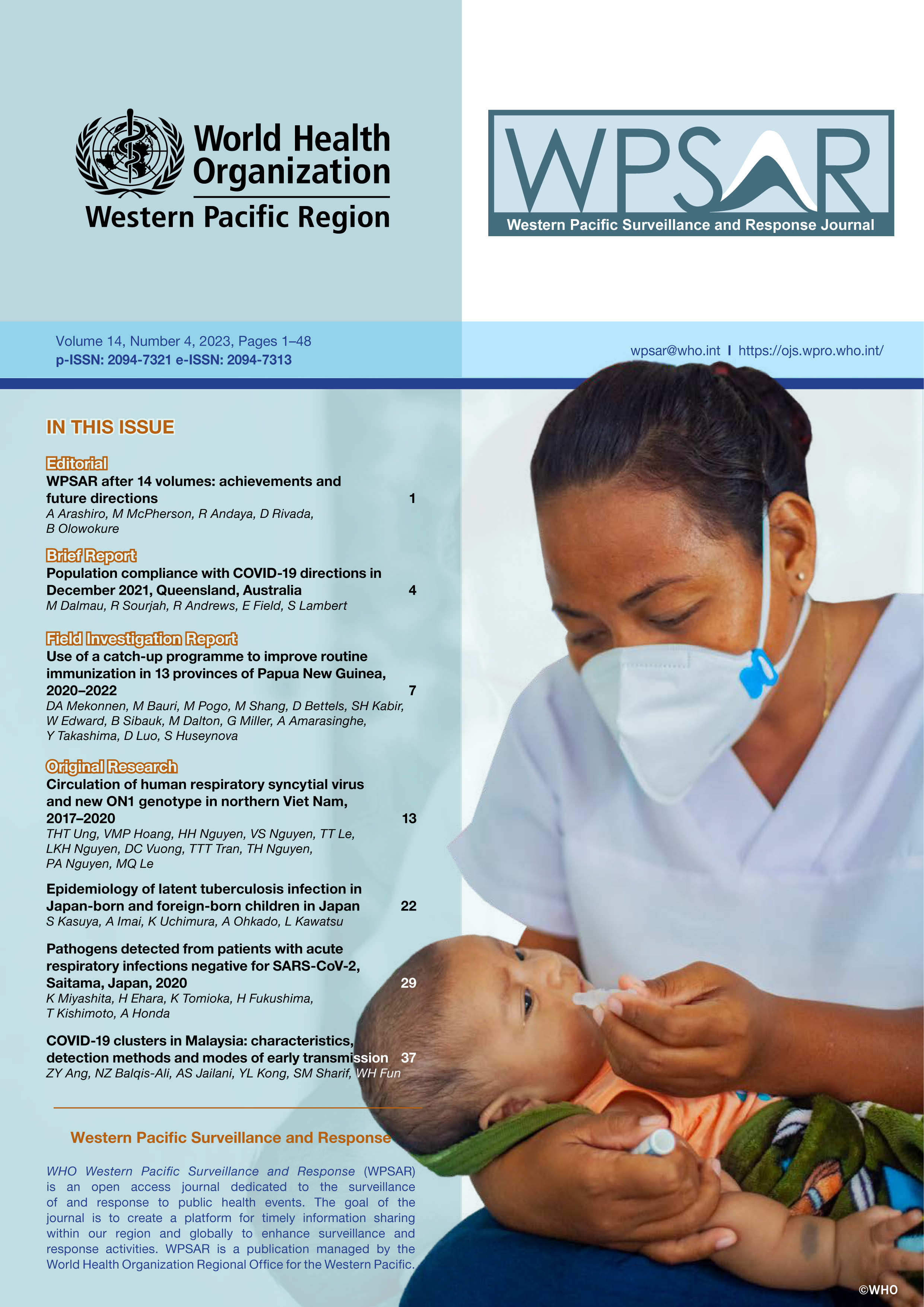COVID-19 clusters in Malaysia: characteristics, detection methods and modes of early transmission
DOI:
https://doi.org/10.5365/wpsar.2023.14.4.1058Keywords:
COVID-19, disease clusters, contact tracing, index case epidemiology, transmission, Malaysia, screeningAbstract
Objective: Effective prevention and control measures are essential to contain outbreaks of infectious diseases, such as coronavirus disease (COVID-19). Understanding the characteristics of case clusters can contribute to determining which prevention and control measures are needed. This study describes the characteristics of COVID-19 case clusters in Malaysia, the method used to detect a cluster’s index case and the mode of early transmission, using the seven cluster categories applied in Malaysia.
Methods: This cross-sectional study collected publicly available data on COVID-19 clusters occurring in Malaysia from 1 March 2020 to 31 May 2021. The characteristics of cases were described by category, and their associations with several outcomes were analysed. Descriptive analyses were performed to explore the method used to detect the index case and the mode of early transmission, according to cluster category.
Results: A total of 2188 clusters were identified. The workplace cluster category had the largest proportion of clusters (51.5%, 1126/2188 clusters), while the custodial settings category had the largest median cluster size (178 cases per cluster) and longest median duration of cluster (51 days). The high-risk groups category had the highest mortality. There were significant differences in cluster size, duration and rate of detection across the categories. Targeted screening was most commonly used to detect index cases, especially in custodial settings, and in imported and workplace clusters. Household–social and social–workplace contacts were the most common modes of early transmission across most categories.
Discussion: Targeted screening might effectively reduce the size and duration of COVID-19 clusters. Measures to prevent and control COVID-19 outbreaks should be continually adjusted based on ongoing assessments of the unique context of each cluster.

